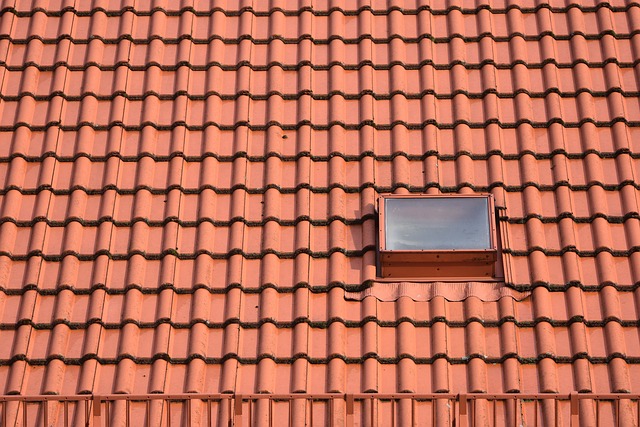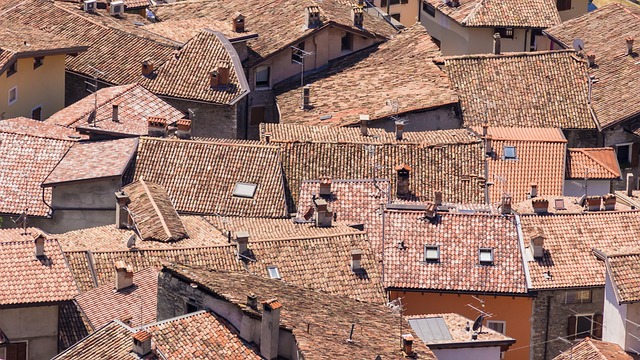When choosing roofing materials, it's crucial to consider local climate and environmental factors to ensure thermal efficiency and structural integrity. In hot climates, light-colored roofs help combat the urban heat island effect by reflecting sunlight and can reduce air conditioning expenses. Conversely, in cold areas, high-insulation materials are key to retaining warmth inside buildings, enhancing comfort and energy conservation. Specialized roofers, often referred to as experts in this field, assess regional weather conditions such as heavy snowfall or strong winds, ensuring the longevity and integrity of the roof. Eco-friendly options like recycled rubber or slate are not only sustainable but also durable and resistant to environmental stressors. The selection process involves weighing performance, cost, and ecological impact, with advancements in roof technology continuously evolving to meet diverse climatic demands. A proficient roofer evaluates local data, including precipitation, temperature ranges, wind patterns, and vegetation types, to recommend the most suitable roofing solutions. For example, metal roofs are ideal for regions with high rainfall and humidity due to their durability and resistance to mold and rust. In contrast, areas with severe winters require robust roofing systems capable of handling heavy snowloads and providing excellent insulation, which can be achieved with materials like reinforced asphalt shingles or sustainable options like synthetic slate. Ultimately, the correct roofing material choice by an experienced roofer will contribute to a home's energy efficiency, structural stability, and performance in its specific environment.
When crafting a durable and efficient structure, selecting appropriate roofing materials tailored to local climate and environmental conditions is paramount. This article, penned with insight from seasoned roofers, delves into the best practices for choosing roofing solutions that withstand regional climatic variances. From the arid heat of deserts to the biting cold of tundras, understanding the impact of your environment on your building’s protection is essential. We explore optimal roofing materials and methods, guiding homeowners and professionals alike in their pursuit of resilient and sustainable structures.
- Optimizing Roofing Materials for Climate and Environmental Factors
- Best Practices for Roof Selection Based on Regional Environments
Optimizing Roofing Materials for Climate and Environmental Factors

When considering the optimal roofing materials for a structure, it is imperative to assess the local climate and environmental conditions. In regions characterized by extreme heat or cold, roofing solutions that ensure thermal efficiency are paramount. For instance, lighter-colored roofs can significantly reduce heat absorption in hot climates, mitigating the urban heat island effect and lowering cooling costs. Conversely, in colder areas, materials with high insulation values prevent warmth from escaping, maintaining interior comfort while reducing energy consumption. Roofers specializing in such regions must be well-versed in the properties of various roofing materials, from asphalt shingles to metal roofs, to recommend options that withstand local weather patterns, such as heavy snowfall or high winds. Additionally, eco-friendly materials like recycled rubber or slate not only contribute to sustainable building practices but also offer longevity and durability, making them a responsible choice for both the property owner and the environment. Selecting the right roofing material is a decision that balances performance, cost, and environmental impact, with rooftop innovations continually evolving to meet the diverse demands of different climates.
Best Practices for Roof Selection Based on Regional Environments

When selecting roofing materials, it is paramount to consider the unique climatic conditions and environmental factors prevalent in a region. A skilled roofer will assess factors such as precipitation levels, temperature extremes, wind patterns, and local vegetation when advising on the best roofing options. For instance, regions with high rainfall and humidity may benefit from materials like metal roofs due to their longevity and resistance to mold and rust. In contrast, areas prone to severe winters with heavy snowfall might require roofing systems designed for optimal load distribution and insulation properties, such as reinforced asphalt shingles or sustainable options like synthetic slate, which mimic the durability of natural slate without its environmental footprint.
Climate-appropriate roofing not only extends the lifespan of a structure but also enhances its energy efficiency. A roofer with expertise in regional conditions can guide homeowners through the selection process, taking into account local building codes and the availability of materials. For regions with extreme heat, reflective roofing materials that comply with Energy Star ratings can significantly reduce cooling costs. Similarly, in cold climates, highly efficient insulation beneath the right choice of shingles or tiles is crucial for maintaining indoor warmth. By aligning roofing selections with regional environments, homeowners ensure the longevity and integrity of their homes while optimizing comfort and energy savings.
When selecting roofing materials, it is paramount to consider local climate and environmental conditions to ensure durability, efficiency, and longevity. This article has outlined best practices for roof selection based on regional environments and the importance of optimizing roofing materials accordingly. Homeowners and roofers alike should take these factors into account to maintain the integrity of a structure. By choosing suitable materials that withstand specific weather patterns and environmental stressors, properties are better protected against damage. For professional guidance tailored to your area’s unique conditions, consult with experienced roofers who can provide informed recommendations for your home or building.
